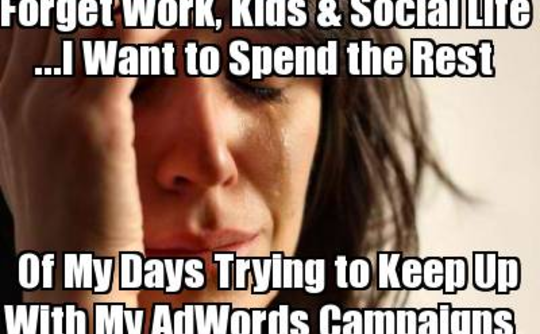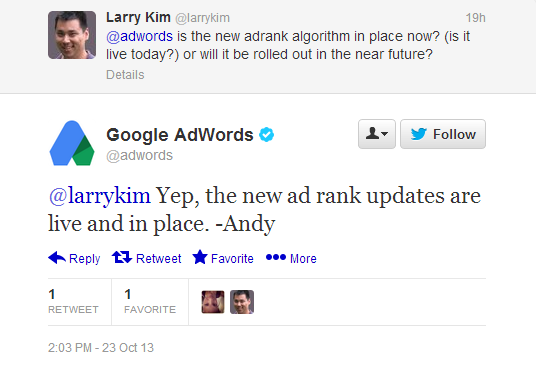
Earlier this week, Google unexpectedly rolled out an update to their AdWords Ad Rank algorithm—you know, the one that decides how your ads are positioned on search results pages and how much they cost. The blog post announcement seems fairly benign, but what does this actually mean for advertisers using AdWords?
In short, if you’re using ad extensions, you might expect to see better ad placement and lower costs per click. If you’re not… well, that’s not a very attractive option anymore. If you aren’t using ad extensions, you’d better start.
This Google’s AdWords update also places extra importance on Quality Score and bids in determining whether extensions will even show on your ads.
So if you are using ad extensions, you’re all set now, right? Not so fast. In their announcement, Google revealed that much of the new factor in Ad Rank – this important algorithm that determines your ad placement and cost – is based on “expected impact from ad extensions and formats.” Basically, Google has devised a way to forecast ad performance using such factors as relevance, CTRs and how visible extensions and formats are on the search results page. Their perception of how well your ad might perform will influence how (or even if) it actually will perform.
It’s yet another example of Google expecting their customers (advertisers) to jump to the line, without ever quite knowing where that line lies. It moves fast and often.
Perhaps those most affected by this update will be SMBs, though that remains to be seen. Smaller businesses typically don’t have the time or budget to stay on top of every nuance and update in the AdWords marketplace. Some might forego using ad extensions until they’ve had time to investigate, test and weigh their options in an informed manner.
There is no time, though. I found the blog post a bit ambiguous and asked Google to confirm there was no grace period for advertisers:

Effective immediately, if your competitors are using ad extensions and you are not, your costs per click may rise while your positioning falls. Assuming your Quality Score and max bids were equal, the competitor using ad extensions now gets the edge.
So what does the Ad Rank update mean for marketers? We can anticipate a few things happening in the marketplace:
- Expect the mobile transition to pick up the pace. Advertiser adoption of mobile best practices has been sluggish, but will gain traction as advertisers are forced to consider ad extensions mandatory.
- Rising average CPCs. Higher Ad Rank means higher CPCs for your competitors. What happens when two advertisers have equal Quality Scores and max bids, with Ad Rank the only differentiating factor? You bid higher.
- AdWords becomes more competitive. We don’t often see a feature an advertiser can use to so directly influence the price of a competitor’s clicks. Welcome to the most competitive auction space we’ve seen to date.
- SMBs will fall down or have to outsource help. How many new ad extensions have we seen added this year alone? Those lacking in time, budget or expertise to master Google’s ad formats and extensions are in for a perpetual game of catch-up.
- Goodbye, more organic SERPs space. Where are all of these expanded ad formats going? SEO loses out again as ads inevitably require more room on the results page.
In the wake of this update, I couldn’t help but draft a haiku in my head as I moved around PubCon, hearing the Ad Rank Rumblings everywhere I turned:
Quality Score king
But ad extensions queen
Be in or lose out.
The weeks ahead hold much testing, brushing up on ad formats and jockeying for ad positioning on the SERPs. Are you ready?

